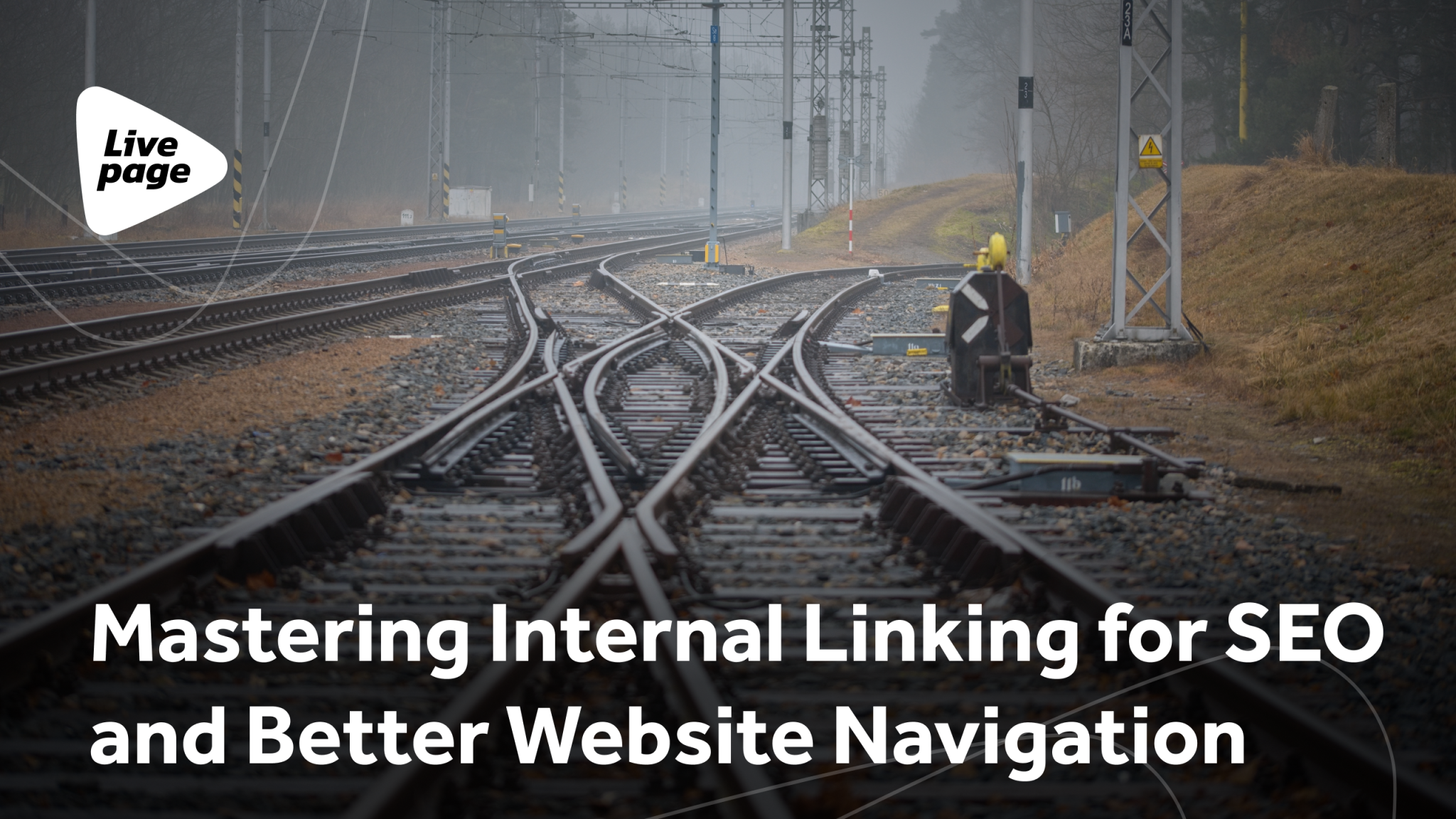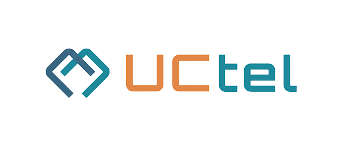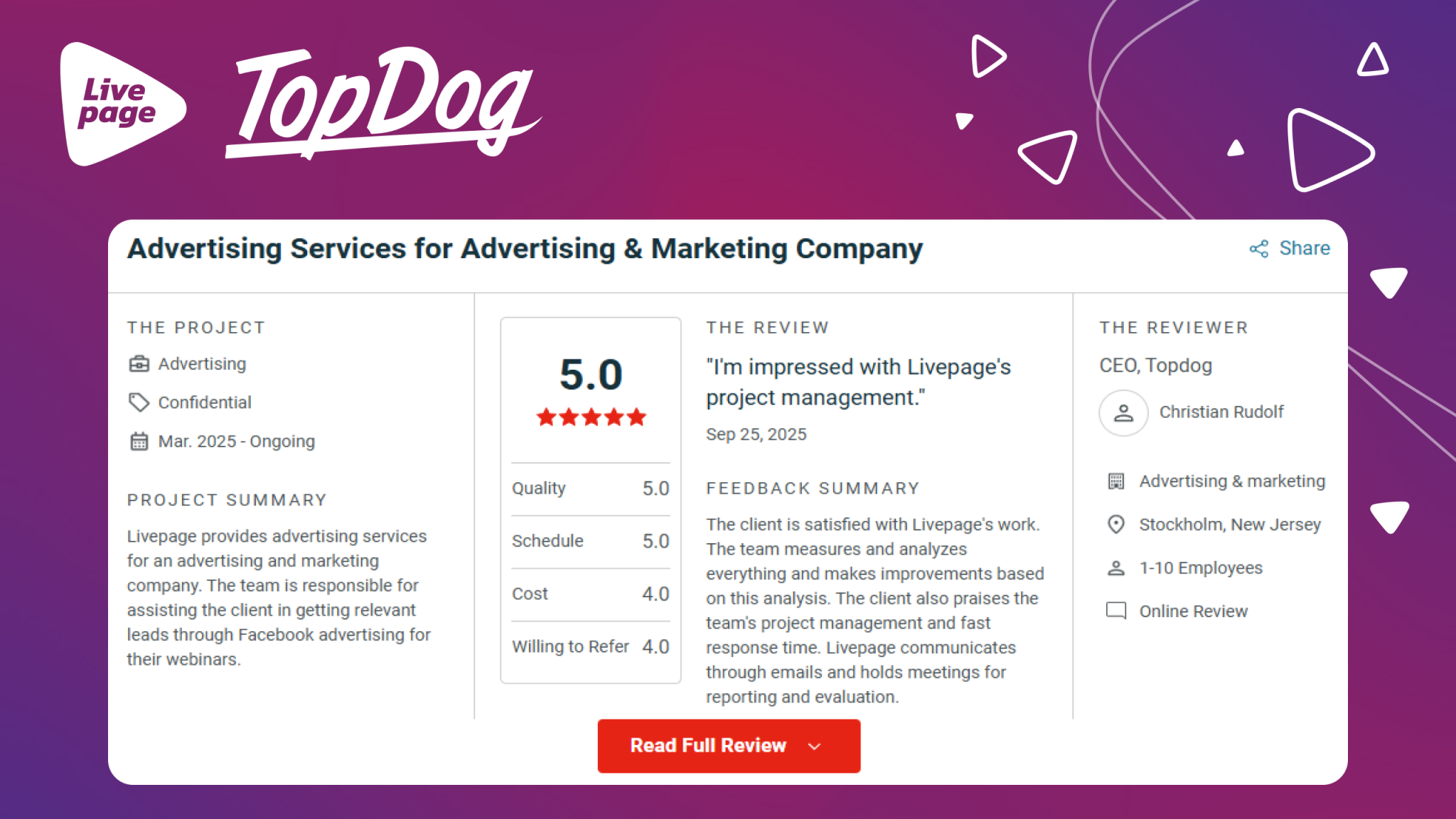
Cookieless Web Analytics Guide: Key Points and Implementation Tips
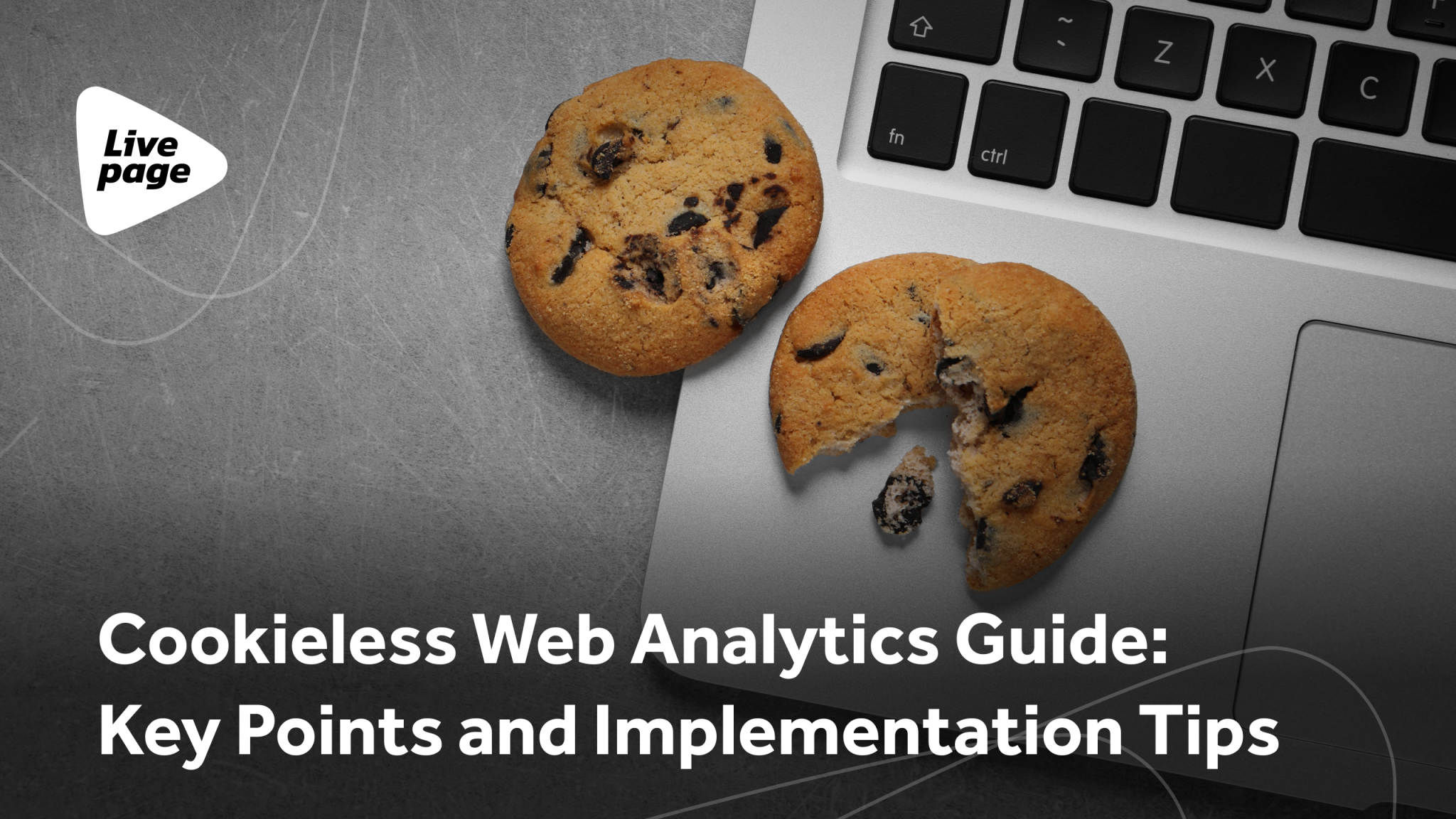
What are cookies and why don’t you need them?
Think of cookies as little digital assistants that a website sends to live on your devices. Their main task is to make your online experience easier and more personalized. For example, thanks to cookies, your favorite online store remembers what’s in your shopping cart, your preferences, and keeps you logged in, so you don’t have to enter your password every time.
However, with rising concerns over user privacy and tightening privacy regulations like GDPR, the role of traditional tracking cookies is being reconsidered. This has paved the way for the adoption of cookieless web analytics.
What is cookieless analytics? It’s an analytics method that does not rely on storing any data locally on the user’s device, making it a privacy-friendly option. Cookieless website analytics extends this approach, ensuring that comprehensive site metrics are collected without any direct data storage on visitors’ devices.
There are several types of cookies:
- First-party cookies are like the site’s own memory storages that store your user information.
- Third-party cookies are behind-the-scenes assistants from other domains that help personalize advertising for you, as well as use various widgets (e.g., chat bots).
- Session cookies are temporary cookies that disappear as soon as you close your session on the website. They ensure that items you’ve added to your shopping cart do not disappear and help you stay logged in during your visit.
- Persistent cookies are long-term browser memory that helps websites remember you and your preferences across multiple visits.
- Secure cookies are the guardians of your online transactions, ensuring that your data is transferred securely on sensitive pages.
The cookieless future emphasizes cookieless web tracking, where methods such as Google’s GA4 cookieless tracking provide insights without compromising on privacy. So, how does cookieless web analytics work? Analytics for cookieless environments focus on non-invasive techniques to gather data, which are crucial for respecting user privacy while still delivering actionable insights.
Cookieless web analytics implementation offers significant advantages, including enhanced compliance with global privacy regulations and the ability to respect user privacy without sacrificing analytical depth. Advantages of cookieless analytics include improved data security, decreased dependency on user consent for tracking, and maintaining user trust.
Best practices in cookieless web analytics suggest a proactive approach in understanding the principles of cookieless web analytics and preparing for widespread adoption. This shift ensures that marketers and businesses can still measure critical metrics like bounce rate and user engagement effectively, even in a cookieless website environment.
Livepage can help you to set up GA4 for cookieless tracking and prepare for the cookieless future, ensuring that your digital marketing remains both powerful and compliant.
Why don’t you need cookies?
Of course, the shift towards cookieless web analytics isn’t about eliminating all cookies—generally, these pieces of information are crucial for the convenience of using the Internet. We are primarily focusing on third-party cookies. Refusing them is not only a compliance measure with privacy regulations like GDPR but also a step towards respecting user privacy and adapting to the evolution of the digital environment. Early adopters of cookieless solutions, such as Enhanced Conversions and GA4 cookieless tracking, can mitigate the shock of sudden changes by ensuring a smoother transition.
Businesses that proactively opt out of cookies are not just meeting requirements; they are adopting innovative strategies that respect personal data, ultimately leading to a more trusting relationship with their audience. This approach to cookieless website analytics signifies a fundamental rethink in how our marketing analytics consultants collect insights about our audiences. It opens up opportunities to employ non-intrusive methods that align with modern privacy expectations.
By embracing cookieless web analytics implementation, companies can remain at the forefront of digital marketing, ensuring that their practices are not only compliant but sustainable in the long run. This proactive stance on cookieless targeting and cookieless attribution offers substantial benefits of cookieless tracking, positioning businesses as leaders in a future where user privacy is paramount.
Introduction to cookie-free web analytics and its importance
The rapid evolution of the digital world is forcing the approach to web analytics to evolve as well. The transition to cookie-free web analytics means a significant shift in the way businesses understand and interact with their online audience. Cookie-free web analytics offers an alternative that respects users’ privacy while continuing to provide useful insights into site traffic, user behavior, and engagement.
Driving forces behind the changes
- Privacy Concerns: As digital users become increasingly aware of their online privacy, the demand for more secure and less intrusive data collection methods is growing rapidly. This heightened awareness has challenged traditional cookie-based tracking methods, prompting a significant shift towards cookieless web analytics that are more respectful of privacy.
- Regulatory Changes: Legislation such as the European Union’s General Data Protection Regulation (GDPR) and the California Consumer Privacy Act (CCPA) have significantly altered the digital data landscape. These regulations stipulate stricter consent requirements and grant users more control over their personal data, challenging the viability of traditional cookie-based analytics. This regulatory environment is a key driver for the widespread cookieless web analytics adoption, as businesses seek to ensure compliance and maintain their operational capabilities.
- Technological Progress: The development of new technologies and cookieless solutions such as GA4’s cookieless tracking mechanisms are crucial. These innovations offer alternative ways to collect insightful data without compromising user privacy, thereby meeting both consumer expectations and regulatory requirements. Advances in technology are enabling cookieless web analytics implementation to provide accurate measurements and tracking in a cookieless future, ensuring that businesses can continue to gain valuable insights without infringing on privacy.
The importance of adapting to tracking without cookies
Adapting to tracking without cookies is not just a response to regulatory requirements, but a strategic step towards future-proofing business operations. This adaptation ensures that companies can continue to collect valuable customer information, improve the user experience, and implement effective marketing strategies without violating privacy rights. Furthermore, it positions companies as trustworthy and respectful of user privacy, enhancing brand reputation and competitive advantage.
Industry leaders and analytics without cookies
Several industry leaders are setting the pace for the adoption of cookie-free web analytics, which indicates a significant change in the market. For example:
- Google has announced plans to phase out third-party cookies in its Chrome browser by 2024, instead offering a Privacy Sandbox initiative for privacy-preserving advertising technologies.
- Mozilla Firefox and Apple Safari have already implemented strict tracking protection, effectively blocking third-party cookies by default.
- Adobe Analytics has introduced new tracking capabilities without cookies, focusing on first-person data and machine learning to fill the gaps left by the lack of third-party cookies.
These moves by major players underscore the industry’s momentum toward cookie-free web analytics, emphasizing the importance of embracing these changes. As the digital landscape continues to evolve, the adoption of cookie-free analytics will be crucial for businesses looking to stay relevant, compliant, and competitive in the digital age.
Understanding alternative tracking methods
How does analytics involving third-party cookies (conditionally standard) work?
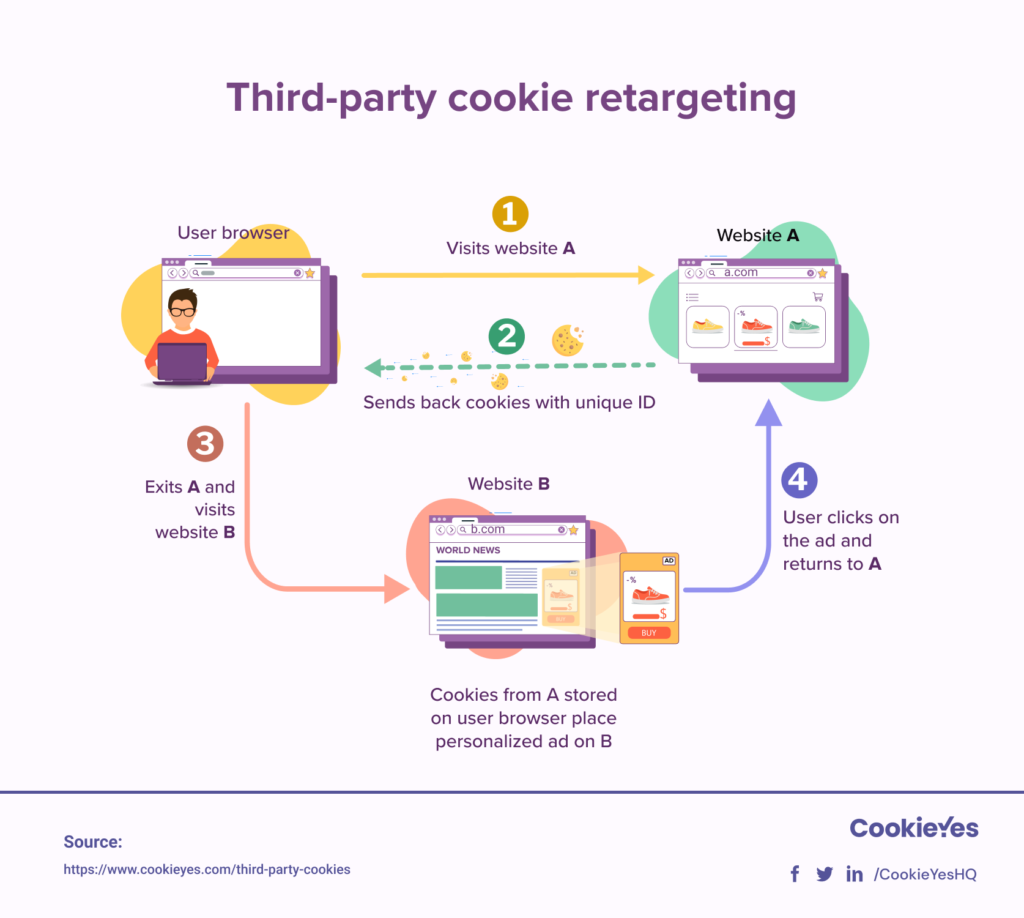
- User visits website A: The user uses a browser to visit website A (e.g. an online store).
- During the visit: A third-party cookie with a unique identifier is placed on the user’s browser by Website A. This usually happens through scripts or advertisements from a third-party domain (not directly from Website A). Such a script may contain information about the user’s location, behavior, interests, gender, age, and many other factors, and sometimes their private data.
- The user leaves Website A and goes to another website designated as Website B (e.g., a news site).
- Website B, which has access to the third-party cookies placed by Website A, displays personalized ads based on the user’s previous activity on Website A. These ads aim to rekindle the user’s interest and potentially bring them back to Website A.
Gradually, as the digital world moves away from traditional cookie-based analytics, various alternative technologies and tracking methodologies are coming to the fore. Thus, web services are trying to strike a balance between collecting actionable information and respecting user privacy. Let’s take a look at some of these alternatives, such as identifiers, digital fingerprinting, server-side tracking, and third-party data collection, and explore their advantages and disadvantages.
Identifiers

One alternative solution is to use identifiers. A website collects personal data from users, such as an email address or phone number, and sends it to a third-party provider for identification. Then either the user is recognized as an existing person or a new identity is created. The user’s data is protected to ensure confidentiality.
Such identifiers are considered universal because they can be used across different platforms and websites. This method ensures that access to information such as browsing history, ad views, and user behavior can be evaluated in the same way as with third-party cookie tracking.
Digital Fingerprint
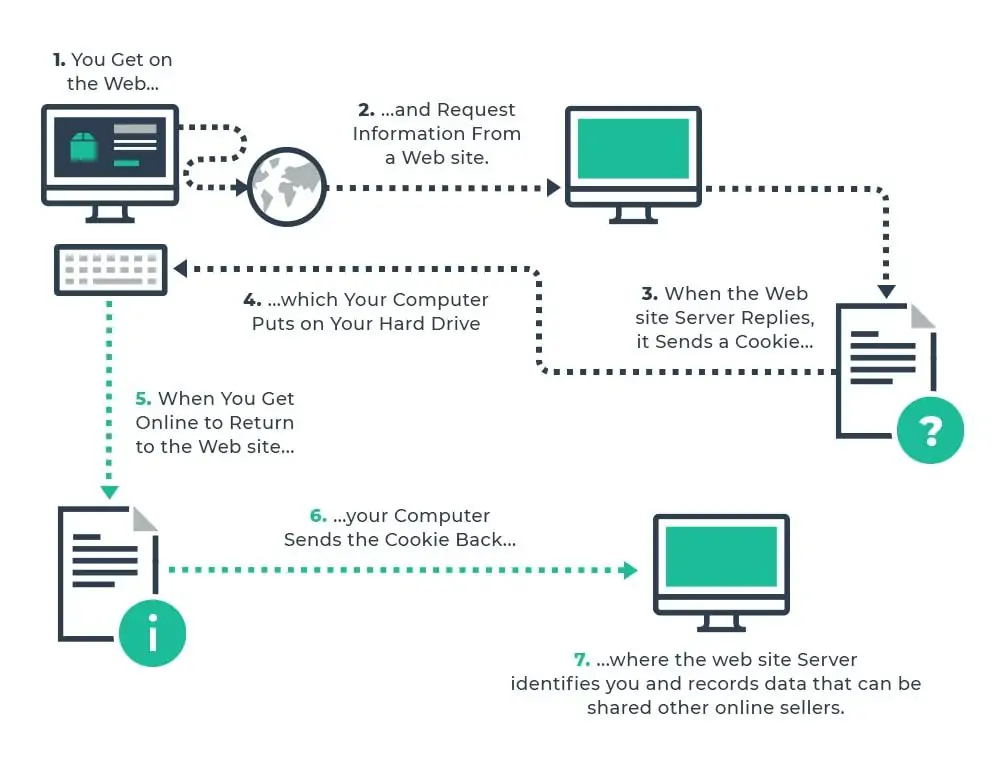
Digital fingerprints collect information about a user’s device and browser settings to create a unique identifier. Unlike cookies, which store data on a user’s device, this “fingerprinting” collects data point by point to distinguish one user from another based on their digital “fingerprint.”
Advantages:
- Durability: Fingerprints are more resistant to user actions, such as clearing cookies.
- Tracking across devices: Allows you to track users across different browsers and devices.
Disadvantages:
- Privacy concerns: Can be considered invasive because users often cannot easily opt out or clear their fingerprints.
- Accuracy issues: Changes to the user’s device or browser settings can alter the fingerprint, potentially affecting tracking accuracy.
Tracking on the server side
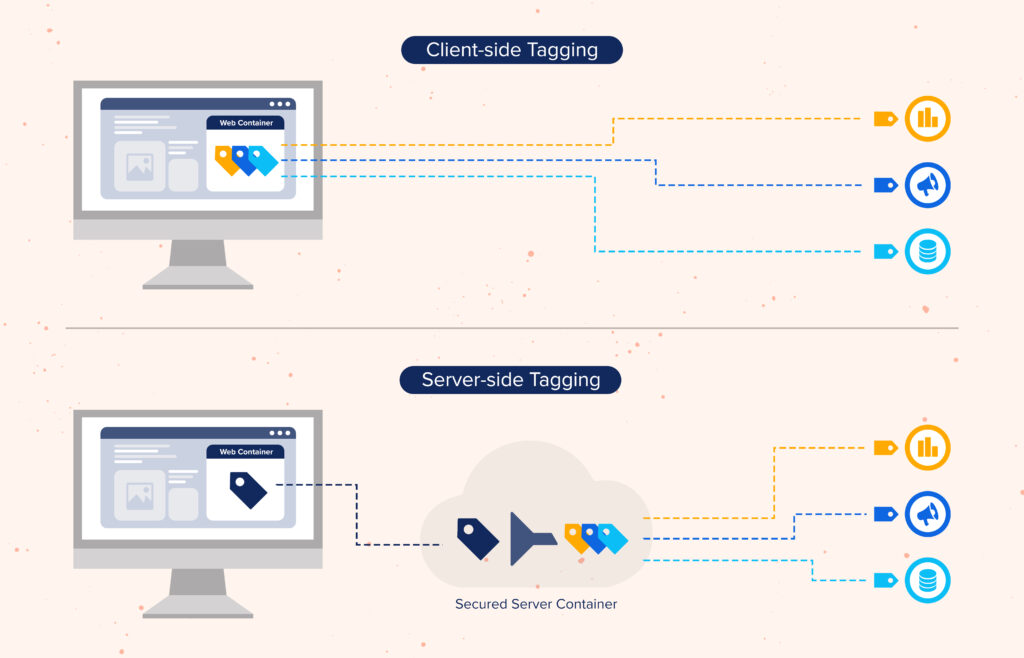
Server-side tracking sends data directly from the server to the analytics provider, bypassing the client’s browser. This method offers an alternative that minimizes reliance on the browser environment, which is becoming increasingly hostile to cookies.
Benefits:
- Improved privacy: This method offers increased privacy because the data collection and processing takes place on the server side, giving companies more control over the data.
- Reduced browser limitations: Less sensitive to ad blockers and browser restrictions on cookies.
Disadvantages:
- Complexity of implementation: Requires significant backend development and infrastructure changes.
- Data granularity: May not record as detailed user interaction as client-side tracking.
Collection of personal data by a third party
This approach involves collecting data directly from user interactions on your website or app, relying on third-party cookies and data provided by users themselves, for example, through forms or when creating an account.
Benefits:
- User trust and compliance: A direct relationship with users can increase trust. It also increases the likelihood of compliance with privacy regulations.
- Data quality: Data is generally more accurate and reliable because it comes directly from users.
Disadvantages:
- Limited scope: Only interactions on your platforms can be tracked, without taking a broader view of user behavior online.
- User consent: Requires transparent communication and often explicit user consent, which can limit the amount of data collected.
Implementing web analytics without cookies: Best practice
Moving to cookieless web analytics is a key step for companies looking to adapt to the changing digital landscape while respecting user privacy. Below are practical steps and tips to help you make a smooth transition, optimize your data collection, and choose the right tools for your needs:
Understand Your Analytics Needs
- Clearly define what you need from analytics, whether it’s tracking user behavior, measuring conversions, or understanding traffic sources. Your goals will determine the type of data you need to collect.
- Evaluate your current data collection. Review your existing analytics setup to determine what data is critical to your decision-making processes. This will help you understand what needs to be replaced or adapted in a cookieless environment.
Utilize First-Person Data Collection
- Maximize your interaction with first-party data. Shift your focus to collecting data directly from users through your website or app. Encourage users to create accounts or sign up for newsletters, providing a rich source of first-person data.
- Communication with users is primarily about privacy. Be transparent with your users about why and how you collect data. Clear, concise privacy policies and consent mechanisms not only meet regulatory requirements but also build trust.
Explore Non-Cookie Tracking Technologies
- Explore available technologies. Investigate fingerprinting, server-side tracking, and other non-cookie methods. Each has its own benefits and implementation challenges, so choose the ones that fit your technical capabilities and privacy standards.
- Test and implement. Start small by implementing cookieless tracking on a specific segment of your site to measure its effectiveness and make adjustments if necessary before rolling it out fully.
Use Modern Analytics Platforms
- Choose the right tools. As the industry moves away from the use of cookies, many analytics platforms are developing cookieless web analytics capabilities. Evaluate tools like Google Analytics 4, which is designed with privacy in mind and does not rely solely on cookies to collect data.
- Integration and compatibility. Ensure that the tools you pick integrate well with your existing technology stack. Compatibility with CMS, CRM, and marketing platforms is crucial for a smooth transition.
Optimize and Adapt Based on Insights
- Review analytics regularly. Tracking without cookies may change how some metrics are recorded. Review your analytics regularly to understand these changes and adjust your strategy accordingly.
- Feedback loop. Use the insights gained from cookieless web analytics to improve the user experience on your site, which can lead to better engagement and more opportunities for data collection.
Stay Up to Date and Compliant
- Keep track of regulatory changes. The legal environment around data privacy is constantly evolving. Stay up-to-date with changes in the law and adjust your practices to comply.
- Continuous education. The move to cookieless web analytics is part of a broader digital transformation. Keep up to date with industry trends and technological advances to continually improve your approach.
Overcoming challenges and prospects for the future
The transition to cookie-free web analytics is not without its challenges. However, by tackling these obstacles head-on and looking forward to the innovations on the horizon, companies can successfully navigate these changes. Here’s how to overcome common challenges and what the future may hold for web analytics in a cookie-free world.
Overcoming common problems
User Resistance to Data Sharing: One of the significant challenges is the skeptical attitude of users towards data collection, fueled by privacy concerns. To overcome this, transparency is crucial. Clearly communicate how and why data are collected, emphasizing benefits for the user such as personalized experiences or improved service quality. This approach not only aligns with cookieless web analytics principles but also builds trust, making users more willing to share their data when they understand the direct benefits and know their privacy is respected.
Technical Implementation Hurdles: The shift from a cookie-based analytics system to a cookieless web analytics system can be technically challenging. Investing in training for your technical team and seeking advice from experts or using consulting services can smooth this transition. Additionally, choosing analytics tools that offer support and resources for tracking without cookies can alleviate some of the technical difficulties. For many businesses, engaging web analytics audit services helps identify gaps and optimize their analytics setup to ensure accurate tracking and reporting in a cookieless environment. This ensures a smoother implementation of cookieless web analytics solutions.
Accuracy and Completeness of Data: Initially, methods that do not use cookies might seem less accurate or comprehensive. To mitigate this, diversify your data collection strategies. Combining data from third-party sources, server-side tracking, and other technologies can help fill the gaps left by the absence of cookies.
These strategies highlight the importance of addressing both technical and user-centric concerns when adopting cookieless web analytics. By understanding and tackling these challenges head-on, businesses can enhance their data collection practices and remain competitive in a digital landscape that increasingly values privacy.
Future prospects for web analytics
Increased Focus on Privacy and Consent: As the landscape of web analytics evolves, a strong emphasis on user privacy and consent continues to grow. Technologies that allow data to be collected without compromising user privacy are becoming more common, and consent management platforms are becoming more sophisticated. This ongoing trend underscores the importance of cookieless web analytics, where user consent and privacy are prioritized, ensuring compliance with global privacy regulations like GDPR and CCPA.
Development of Artificial Intelligence and Machine Learning: Artificial intelligence (AI) and machine learning (ML) will play a crucial role in analyzing the vast amounts of data collected through non-cookie methods. These advanced technologies are capable of uncovering deeper insights, predicting user behavior, and personalizing user experiences more effectively than ever before. The integration of AI and ML in cookieless web analytics will transform data into actionable insights, enhancing the precision of marketing campaigns and user engagement strategies.
Integration of Offline and Online Data: As businesses strive to gain a holistic view of their customers, the integration of offline and online data becomes a key trend. This integration provides a more complete understanding of customer behavior across multiple touchpoints. For companies utilizing cookieless web analytics, this convergence enables more effective marketing strategies and improved customer service by leveraging a comprehensive data set that includes both digital interactions and real-world behaviors.
To fully leverage these advancements, many businesses are turning to end-to-end analytics services that unify data collection, processing, and analysis across all channels and platforms.
These future directions in cookieless web analytics reflect an industry moving towards more ethical data practices, enhanced by technological advancements. By embracing these trends, businesses can prepare for a future where analytics are both powerful and privacy-centric, providing a competitive edge in a rapidly changing digital environment.
Leveraging specialized analytics services for small and medium business can help organizations navigate this transition more effectively and unlock new growth opportunities.
Final Thoughts
The move to cookie-free web analytics is a significant change, but it is also an opportunity. Companies that actively embrace this change can use it as a catalyst for growth. By focusing on ethical data collection and utilizing the latest technologies, companies can not only comply with current privacy laws, but also build deeper trust with their customers.
Adapting to cookie-free analytics allows companies to refine their marketing strategies, improve the user experience, and ultimately drive growth. It encourages innovation and forces us to rethink how we collect and use data, pushing the industry toward more sustainable and user-centered practices.


